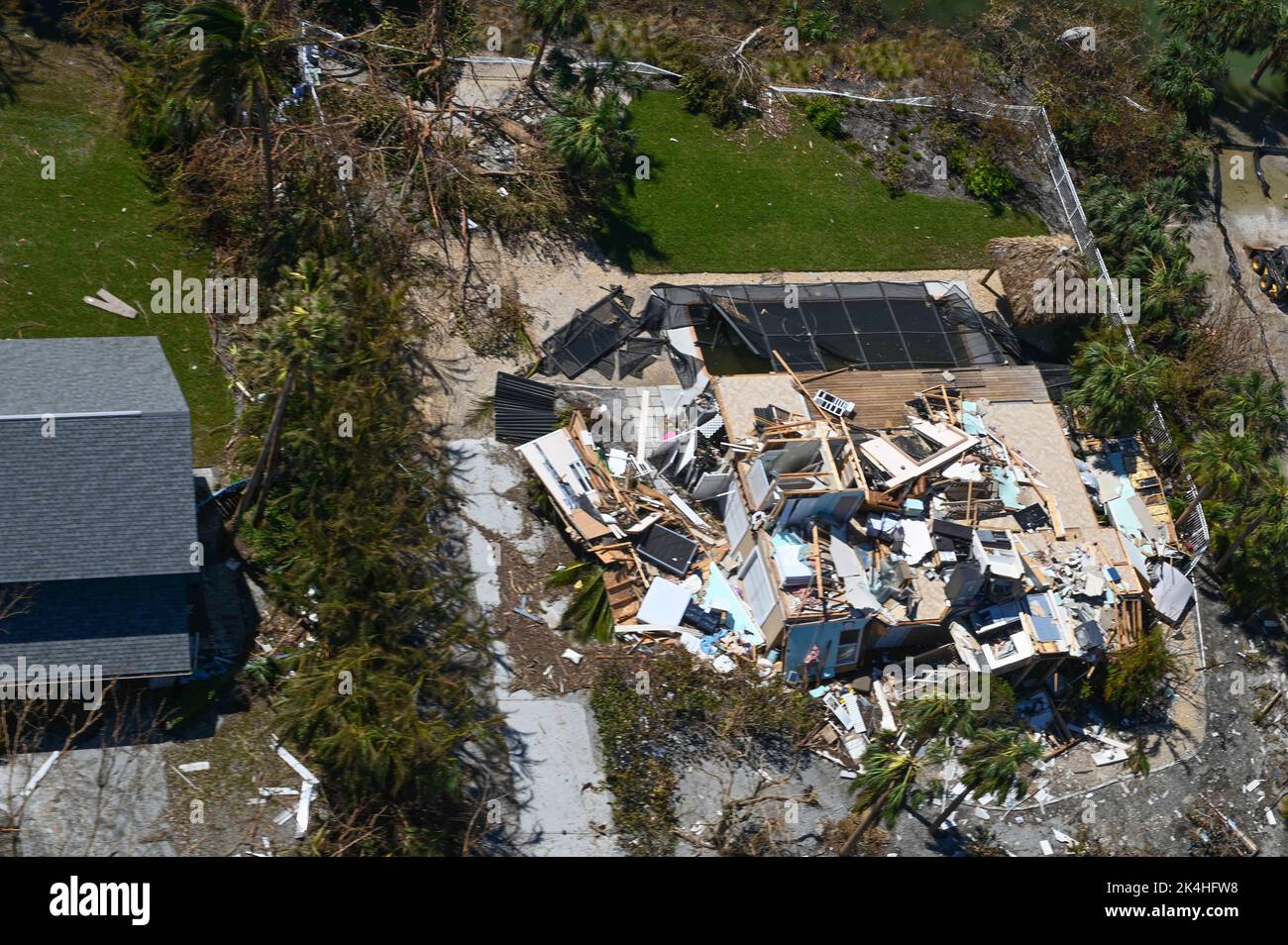A U.S. Coast Guard Air Station Clearwater MH-60 Jayhawk aircrew conducts overflights along the coast of western Florida following Hurricane Ian Oct. 1, 2022. Coast Guard assets are conducting search and rescue operations in response to the damages caused by Hurricane Ian. (U.S. Coast Guard photo by Petty Officer Third Class Riley Perkofski)

Image details
Contributor:
American Photo Archive / Alamy Stock PhotoImage ID:
2K4HFW8File size:
69.6 MB (3.1 MB Compressed download)Releases:
Model - no | Property - noDo I need a release?Dimensions:
6048 x 4024 px | 51.2 x 34.1 cm | 20.2 x 13.4 inches | 300dpiDate taken:
1 October 2022Location:
FloridaMore information:
This image could have imperfections as it’s either historical or reportage.
Hurricane Ian was a large, deadly and destructive Category 4 Atlantic hurricane that caused widespread damage across the southeastern coast of the United States, especially the state of Florida after it made landfall in western Cuba. It was the ninth named storm, fourth hurricane, and second major hurricane of the 2022 Atlantic hurricane season. Ian originated from a tropical wave that was located by the National Hurricane Center east of the Windward Islands on September 19, 2022. Two days later the wave moved into the Caribbean Sea bringing winds and heavy rain to the ABC islands, Trinidad and Tobago, and the northern coasts of Venezuela and Colombia on September 21–22. It showed signs of development into a tropical depression later that day, as convection increased and the system became more compact. After strengthening into Tropical Storm Ian, it became a hurricane as it neared the Cayman Islands, before rapidly intensifying to a high-end Category 3 hurricane as it made landfall in western Cuba. Significant storm surge and heavy rainfall affected Cuba and the entire province of Pinar del Río lost power. It slightly weakened during its time over land, but re-strengthened once it moved into the southeastern Gulf of Mexico and over the Dry Tortugas, becoming a high-end Category 4 hurricane early on September 28, 2022, as it progressed towards the west coast of Florida. Ian remained at Category 4 strength as it made landfall in Southwest Florida on Cayo Costa Island, tying as the 5th-strongest hurricane on record to make landfall in the contiguous United States.[4] After making a second landfall in Southwest Florida, Ian rapidly weakened to a tropical storm before moving back out into Atlantic, where the storm reintensified back to a hurricane and made landfall in South Carolina. Ian caused catastrophic damage in parts of Southwest Florida, mostly from flooding due to extreme storm surge and rainfall.